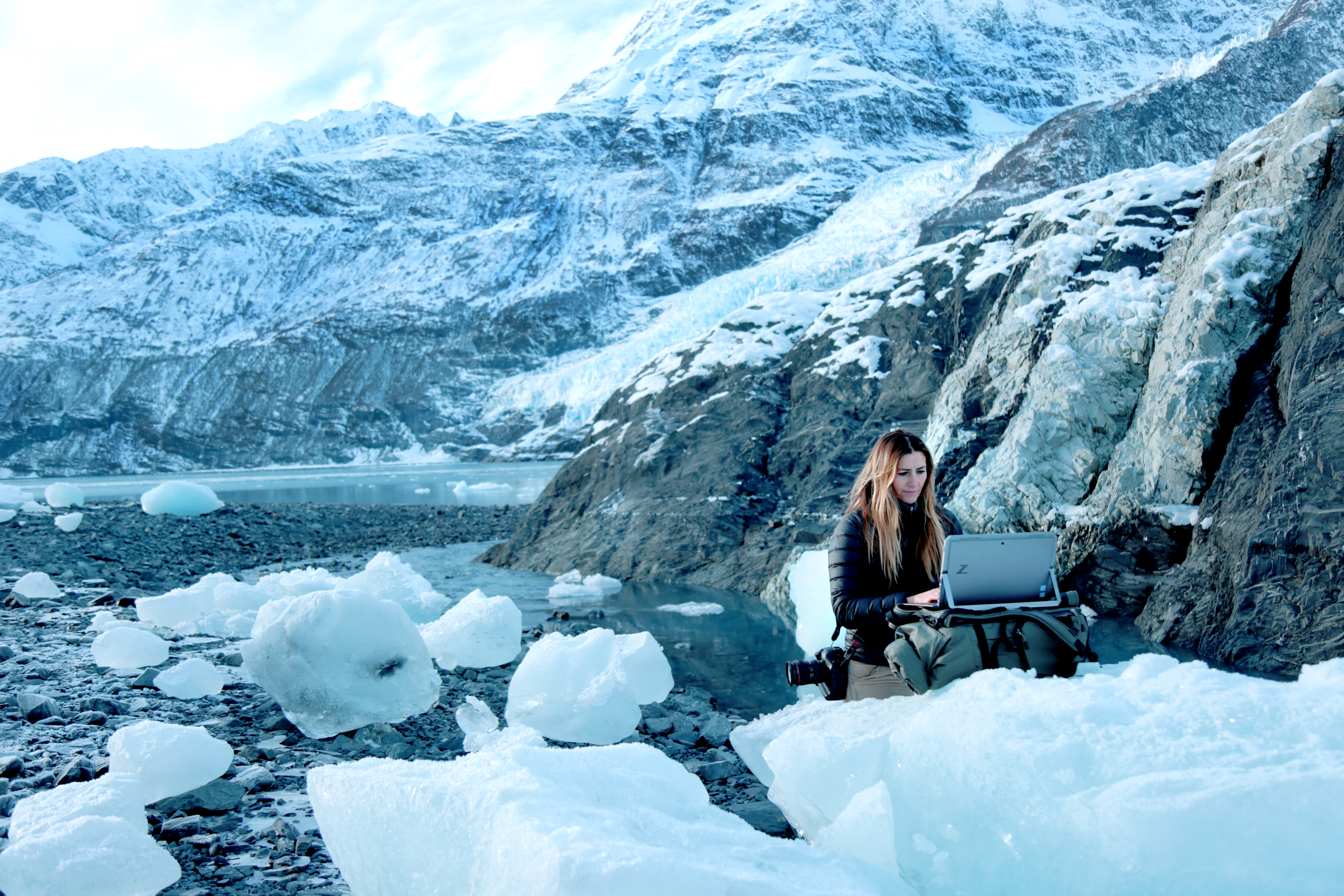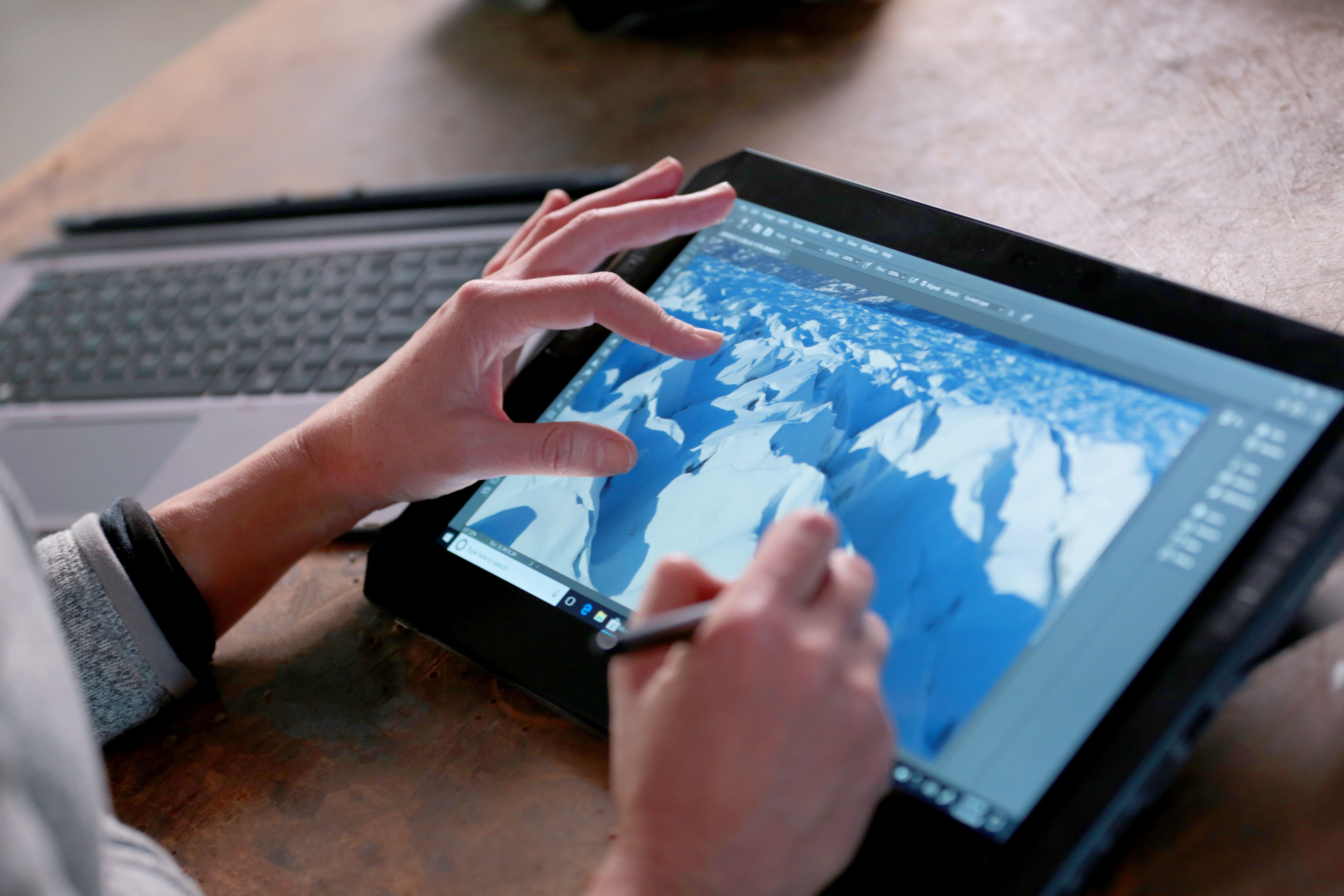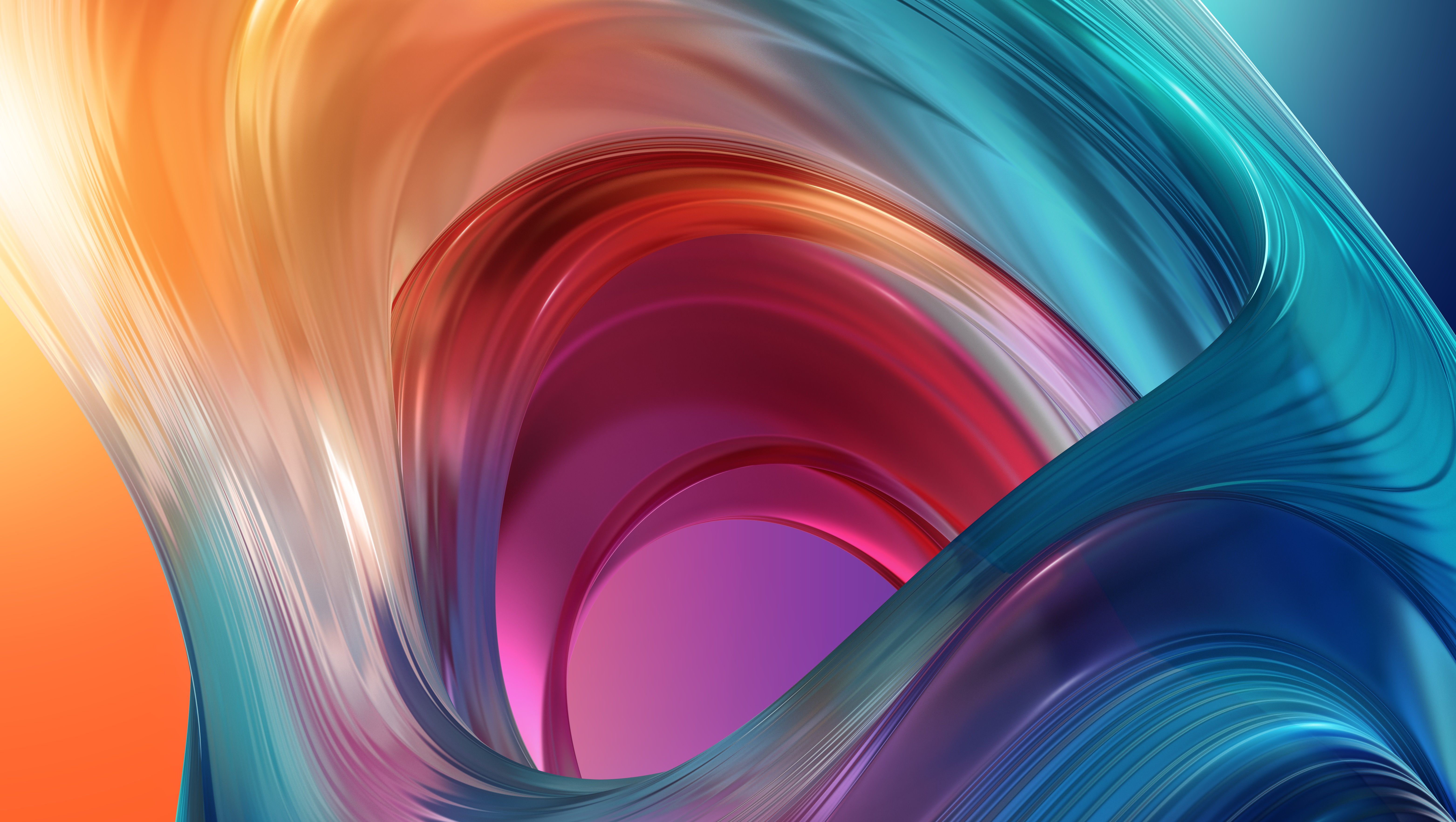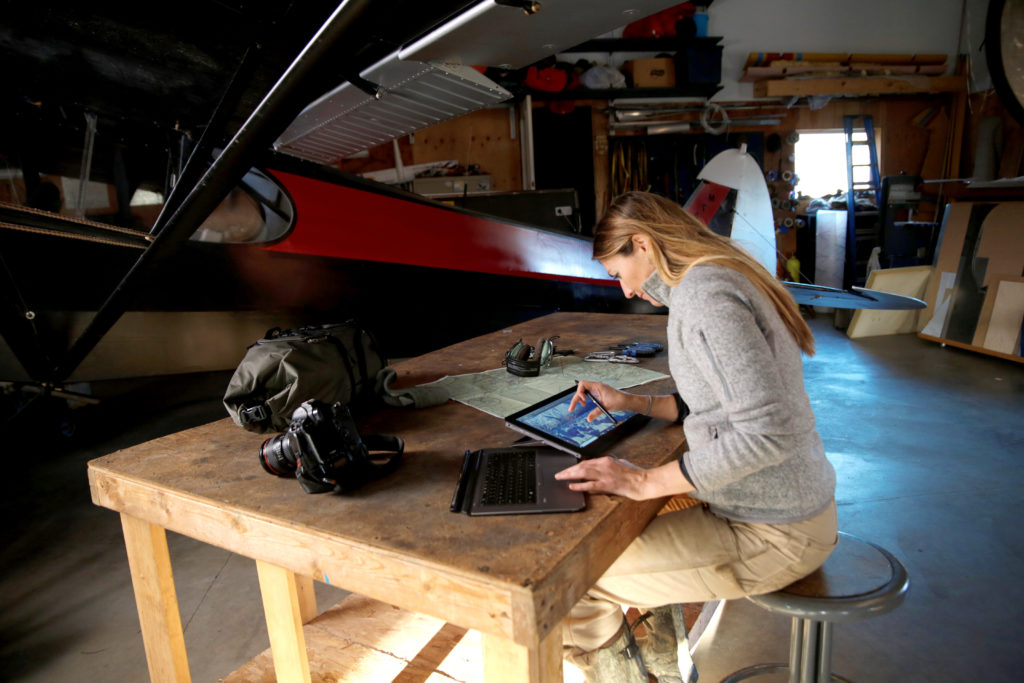
Take it from the pros: Photographer and digital artist up their game with Z by HP
Jody MacDonald has had many challenging assignments, but for the award-winning photographer, a six-week trek testing an all-weather camera through the Sahara Desert stood out.
During the day, the heat was unbearable, the nights freezing. She slept on top of iron ore, on the world’s longest train. She encountered huge sandstorms.
MacDonald specializes in shooting locations around the world for publications and clients such as National Geographic, Red Bull, Outside, BBC, Patagonia, Islands and Men’s Journal. In another life, she led kiteboarding expeditions for five years.
MacDonald has been traveling her whole life. When she was 2, she moved to Saudi Arabia with her family, where she stayed until she was 16, returning to Canada. But one place she kept going back to is Alaska. When she goes there, she visits her brother and his family, who live off the grid.
“There’s a simplicity in the lifestyle I connect with and admire,” she says. “There’s a lot to learn and value. It’s healthy and energizing. I love it so much. I feel like I’m coming home. It’s the closest place to a home I’ve ever had.”
She sailed around the world for a decade, finding the middle of the Pacific or Atlantic oceans the most remote of places. She’s working on a project that’ll put her in the jungles of Northern India, where she’ll be drenched in rain all the time.
With extreme weather conditions like this, her gear gets banged around a lot as it travels on the backs of donkeys, pickup trucks and small aircraft. She needs powerful, physically durable equipment.
In 2018, she became a Z by HP ambassador as she tried out a new HP ZBook x2, replacing her MacBook Pro. With it, she’s experienced a level of detail and ease of use in the editing process she’s never had.
“I hadn’t really thought about transitioning,” MacDonald says. “I didn’t think there was anything else out there. I had no idea what the Zbook was capable of. I found it’s really portable and durable. It’s not too big, not too small, and durability for me is really important.”
Though she’s taken art classes since she was young, she’s using a digital pen on-the-go for the first time.
“It really reminds me of my art classes, in university, when I was creating a piece of art. This is more like a brush than a pen,” she says. “Just that level of detail made me feel like I wasn’t just editing a photograph, it was more of a collaborative effort using the pen. It inspires me to be more creative.”
What stands out the most for MacDonald is that her new device allows her to be more efficient and creative. It’s streamlined her workflow, having something so portable and durable.

Jody MacDonald zooms in on her Zbook
“Being able to remove that keyboard is helpful when I’m in not-ideal editing situations. It adapts to my lifestyle. It’s a game changer for me.”
Previously, she’s associated editing in the field to frustration.
“Color correction is huge for me, and previously, it’s been an ongoing problem. Now I don’t have to worry about color accuracy,” she says. “I feel like images have no option but to be better.”

One of Rik Oostenbroek’s creations on his HP Z4
Photographers like to shoot at magic hour. For digital artist Rik Oostenbroek, sunset and dusk at home in the Netherlands are also prime times for inspiration.
His favorite color is orange, which also happens to be the national color, and his work reflects that in intricate swirls, flames, sparks, leaves and abstract shapes. His art, like the nature that surrounds his environment, changes and grows organically with different textures and shapes. He also decorates his home in orange accents, like the light bulb in his office and his steel desk. Even as he moves about, orange makes its mark – in his watch and on his shoes.
“Sunsets are super important to my work, especially when it comes to color schemes. I always love to get away with this orange feel with blue combined – like a blue sea. These things are super important to me,” Oostenbroek says. “Also when it comes to lighting, it’s super hard to nail the feeling of magic hour, especially in 3D. It’s so hard to fake it and that’s really something I try to build up to.”
Color is the most important thing to him, as a digital artist.
“I want to contribute positivity to the world by creating colorful art,” he says. “People always ask me how I do my color hues. It’s the same process I use for creating something. I just go with the flow and whenever I have one cool base color, I can change it in the middle of the process whenever it doesn’t work with the other colors.”
Using HP’s DreamColor Z31x display, he’s able to see more colors in a way he wasn’t able to before.
“I always start with a blank canvas and like every minute my idea changes,” says Oostenbroek, whose clients include Cirque du Soleil, Nike, Verizon, Pitbull, ESPN and Mazda. “Keep it spontaneous, keep it fun, keep exploring. The way I try to approach my client briefs is just playing and seeing wherever it can take me. I really enjoy the process of starting from nothing.”
For him, the biggest challenge in his work is the time it takes to do 3D renderings, using software like Cinema 4D and the Adobe Creative Cloud. Whenever he’d change a light source or color, it used to take three minutes to get that feedback. But now it shows directly on the screen, in a split second.
He had spent his entire freelance career – 10 years – working with Macs, and he had grown frustrated. The system’s performance issues were huge for him, as was the difficulty in upgrading and installing new parts. So he decided to switch to an HP Z4 late in 2018.
“I can bust out so much more whenever I’m either working personal or professional projects, so that’s great,” Oostenbroek says. “The last Windows I used was Windows XP, so that’s how long ago I had used Windows. But it was easy to switch. All the software I use works the same on Windows 10. It’s older software, but it works so much faster thanks to the Z4’s capabilities. My workflow is so much faster now. And that’s the best thing.”
HP gives the option to remap the keyboard, so he can continue to use the shortcuts that are most familiar to him.
His Mac could not give him the RAM he needed to open “crazy resolution” files (20,000 x 20,000 pixels). He used to go to a friend’s to open those files but now he can handle everything himself. He also now has the capability to render on a graphics card, which is something he says he’s wanted “for ages.”
“HP brought me to that moment,” he says. “I’m super happy with that.”
He had also stopped doing animation for personal projects because it used to take so much of his free time to render it. But now he’s taking on personal animations thanks to the quick feedback he gets from the Z4, which saves him a lot of time, as he’s able to make corrections more quickly.
A self-taught artist who didn’t discover Photoshop until he was in high school, he avoids online tutorials, preferring to follow his own path. Constant change not only applies to his workstyle, but also his philosophy about learning.
“Improvement is key for my own work. I always want to learn something from every project I take,” he says. “Improving and learning throughout the creative process can be really rewarding because you can pay the bills, but you’ve learned a lot too. So that’s like a total win-win situation. The learning curve is super important for me.”
To find out more about how these devices work for creative professionals, head over to Z by HP.
Photos courtesy of Z by HP.



